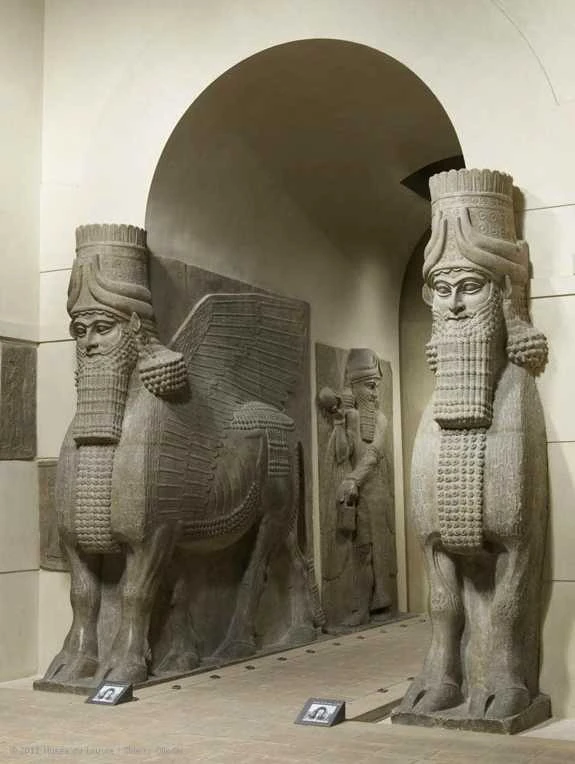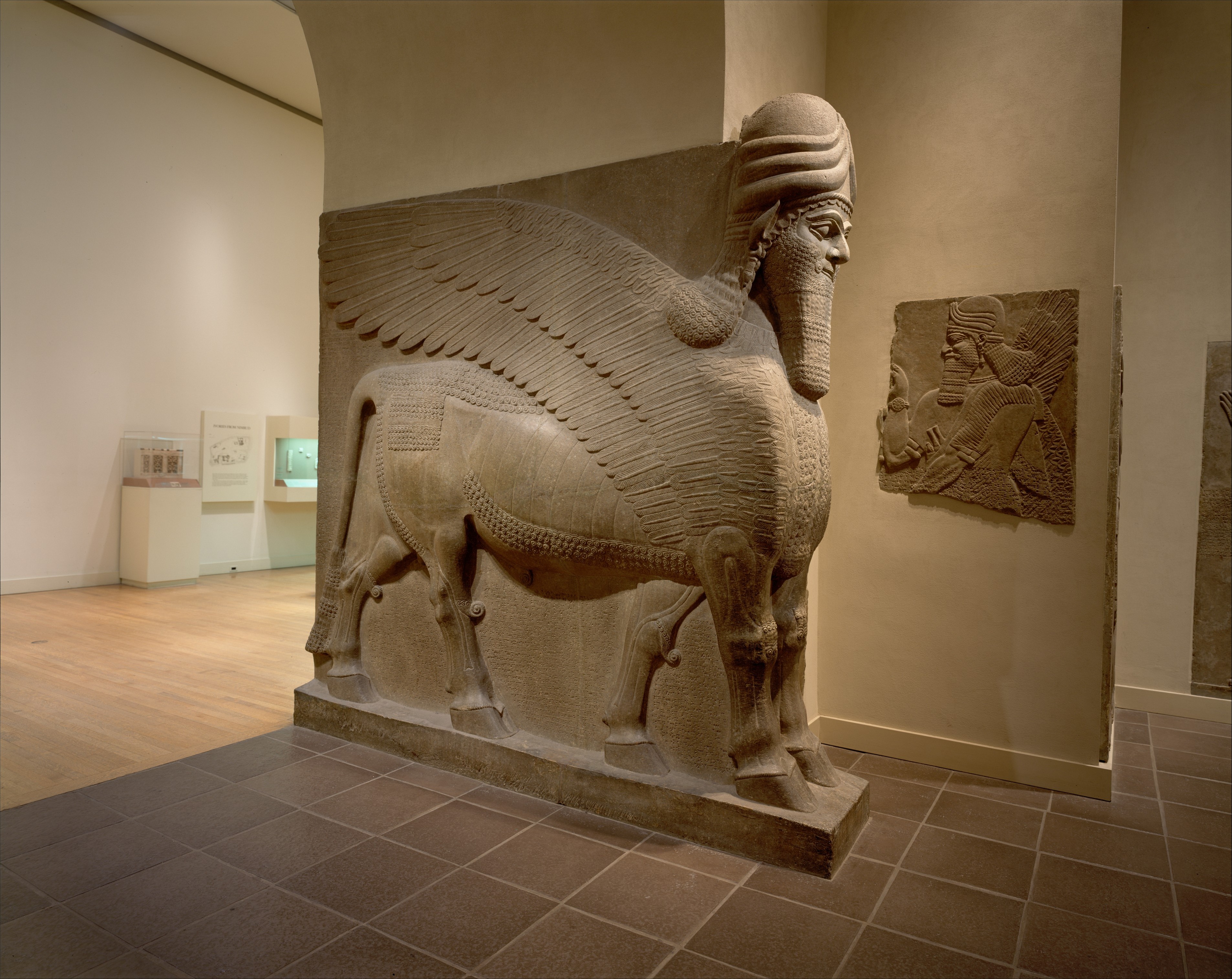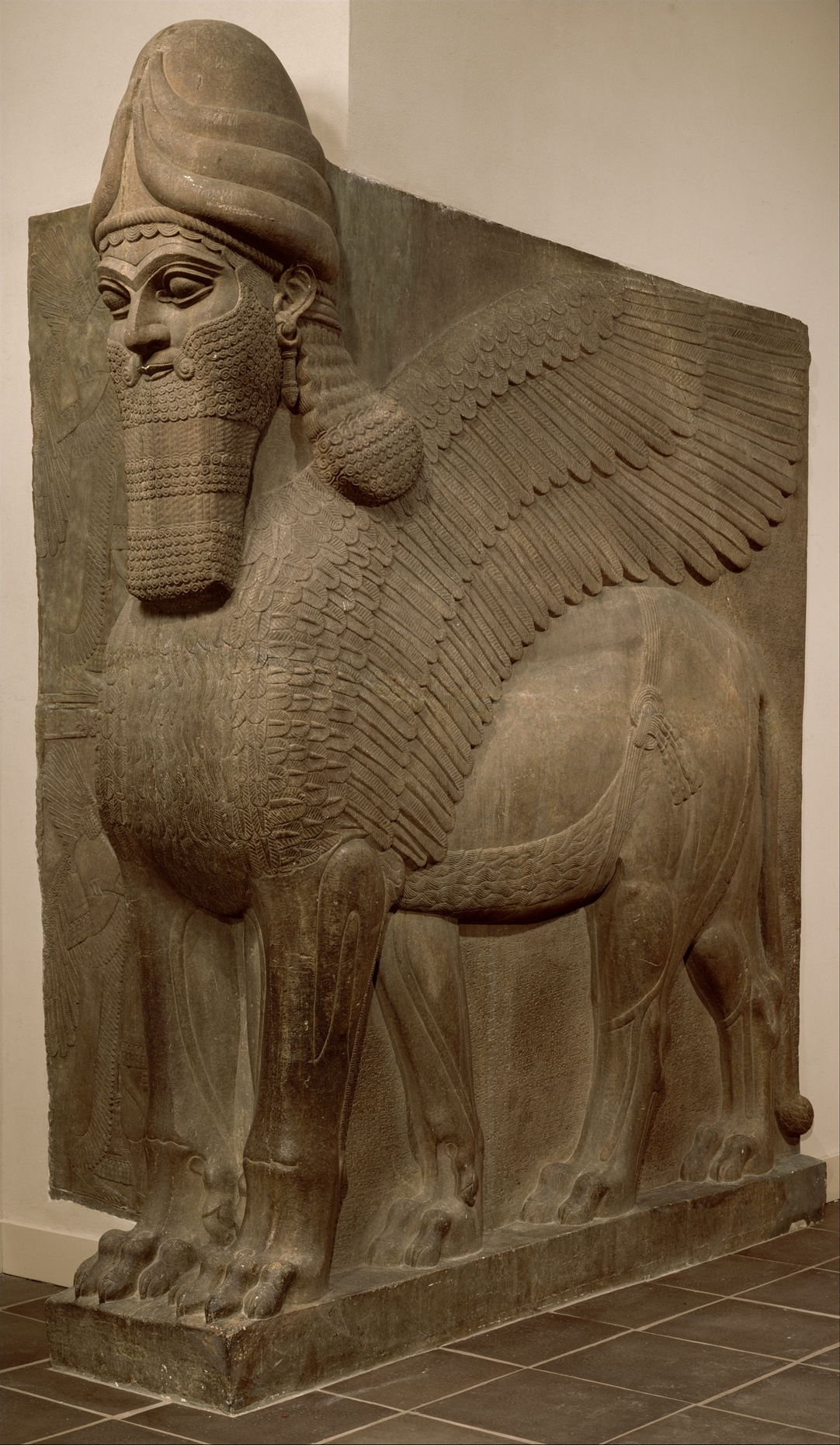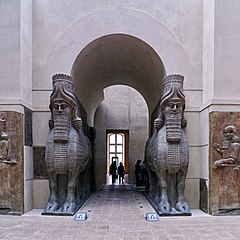Click to see full answer. In some cases the lamassu statues were accompanied by.

Lamassu History 2701 Wiki Fandom
721-705 BCE Part of a collection at the Louvre in Paris France.

. The first change was the capital was moved to Dur Sharrukin present day Khorsabad and second the Lamassu was presented on a bulls body compared to a lions and seems to be slightly smiling. This replica was made with 10000 Iraqi date syrup cans and serves as a symbol of. Furthermore where were the lamassu sculptures originally displayed.
Assyrian sculpture typically placed prominent pairs of lamassu at entrances in palaces facing the street and also internal courtyards. Colossal Lamassu Sculpture From The Palace Of Sargon Ii At Khorsabad Sargon Ii Google Arts Culture Human Headed Winged Bull Lamassu Assyrian Neo Assyrian The Metropolitan Museum Of Art Share this post. Assyrian sculpture is the sculpture of the ancient Assyrian states especially the Neo-Assyrian Empire of 911 to 612 BC which ruled modern Iraq Syria and parts of IranIt forms a phase of the art of Mesopotamia differing in particular because of its much greater use of stone and gypsum alabaster for large sculpture.
They were represented as double-aspect figures on corners in. Currently representations of Lamassu are parts of collections at the British Museum in London Metropolitan Museum of Art in New York and The Oriental Institute in Chicago. What ethnic group is credited with the first system of writing known to man.
Where were the lamassu sculptures originally displayed. The British Museum is a public museum dedicated to human history art and culture located in the Bloomsbury area of London. From what we can tell it seems that these sculptures were believed to protect the palace and king from evil supernatural forces as well.
Where were the lamassu sculptures originally displayed. This replica was made with 10000 Iraqi date syrup cans and serves as a symbol of. For this reason it is not an entirely freestanding sculpture.
These sculptures were excavated by P-E. An American professor named Michael Rakowitz was commissioned to recreate this Lamassu sculpture and it is now displayed in Trafalgar Square in London. It documents the story of human culture from its beginnings to the present.
These massive sculptures served as symbolic guards of Assyrian kings domain being placed at the entrance to both the city and palace gateways See Collins 2008 72. In the Assyrian mythology there were human headed winged bullslions that were protective genies. The most famous colossal statues of Lamassu have been excavated at the sites of the Assyrian capitals established by King Assurnasirpal II reigned 883 859 BCE and King Sargon II reigned 721 705 BCE.
The first distinct lamassu motif appeared in Assyria during the reign of Tiglath-Pileser II as a symbol of power. This was possibly the first time when Europeans watched the mythical monsters. To protect the household Lamassu were engraved in clay tablets and the tablet would then be buried under the doors threshold.
The first Lamassu appeared under Tiglath-Pileser in the 900s BCE. Sargons palace gudeas lagash ashurbanipals palace ziggurat at ur. What ethnic group is credited with the first system of writing known to man.
Backstory The lamassu in museums today including the Louvre shown in our video as well the British Museum The Metropolitan Museum of Art and National Museum of Iraq in Baghdad and others came from various ancient Assyrian sites located in modern-day Iraq. However it is displayed in a museum in its original context a lamassu is the guardian of a doorway integral with a wall. On a larger scale Lamassu would also flank the entrances of palaces as colossal sculptures in high relief in pairs.
Appreciating and understanding ancient Egyptian art. Where were the Lamassu sculptures originally displayed. The Lamassu seen from the side from the palace Sargon II r.
The Assyrians envisioned a protective spirit that was part bull and part human and sometimes part eagle. The Ziggurat at Ur was a fortress funerary monument palace temple platform Where were the Lamassu sculptures originally displayed. The Ziggurat at Ur was a fortress funerary monument palace temple platform Where were the Lamassu sculptures originally displayed.
Alabaster The Assyrian lamassu sculptures are partly in the round but the sculptor nonetheless conceived. Originally unearthed in Rome and displayed in the Borghese Gallery it was sold to the occupying French and now sits in the Louvre. Assyrian sculpture typically placed prominent pairs of lamassu at entrances in palaces facing the street and also internal courtyards.
The British Museum was the first public national museum in the world. Many aspects of the palaces original appearance remain unknown and the sculptures themselves come originally from multiple rooms although together they are. On view at The Met Fifth Avenue in Gallery 401.
Much the best-known works are the huge lamassu guarding. Which work has a king approaching the god. Lamassu were placed on either side of the doorways of Assyrian palaces and of gateways to cities to protect against evil spirits and impress the neighbors.
The room is not a full reconstruction. The Assyrian Sculpture Court Gallery 401 displays sculptures from the Assyrian capital city of Nimrud ancient Kalhu in a space designed to evoke their original palace setting. It comes from Mesopotamia and is believed to.
The first change was the capital was moved to Dur Sharrukin present day Khorsabad and second the Lamassu was presented on a bulls body compared to a lions and seems to be slightly smiling. The Lamassu sculptures were recovered from where. What were the most common themes in Assyrian art.

Lamassus At The Louvre Thatmuse

Human Headed Winged Bull Lamassu Assyrian Neo Assyrian The Metropolitan Museum Of Art

Lamassu Backstory Article Assyrian Khan Academy

Lamassu From The Citadel Of Sargon Ii Video Khan Academy

Human Headed Winged Lion Lamassu Assyrian Neo Assyrian The Metropolitan Museum Of Art

25 Lamassu From The Citadel Of Sargon Ii Dur Sharrukin Modern Iraq Ap Art History
Colossal Lamassu Sculpture From The Palace Of Sargon Ii At Khorsabad Sargon Ii Google Arts Culture

0 comments
Post a Comment